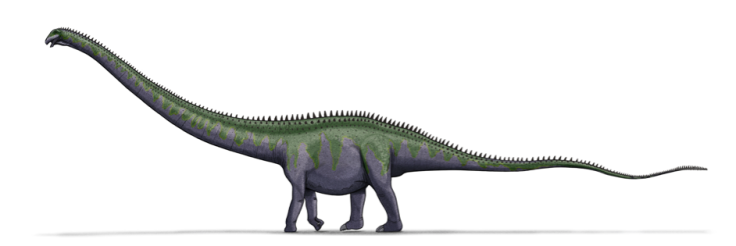By Stéphanie Peltier, Françoise Benhamou and Mamoudou Toure

What does the long tail effect mean? In many industries, sales are concentrated on a few products in spite of the diversity of products available. The long-tail effect weakens the high level of concentration of sales. It compensates for a “winner-take-all” or a superstar phenomenon. But is there also a long-tail for small publishers?
In a well-known book, Chris Anderson makes the following hypothesis: according to a “long tail effect”, e-commerce reduces the concentration of sales for books. Three forces tend to shift demand from the most popular products (the head of the sales distribution) to niche products (the tail). (1) The decrease in production costs increases the variety supplied and thus increases the length of the tail. (2) The constraints of physical shelf space disappear and distribution costs decrease drastically. Therefore, consumers have easier access to niche products. This fattens the tail because some products will find an online audience sufficient to ensure their profitability. (3) Furthermore, new ways of connecting demand and supply through Web 2.0 (Facebook, Twitter, blogs, forums, recommendation tools, etc.) improve matching between supply and demand by reducing search costs. Consumers may have better knowledge of products closer to their ‘‘ideal variety’’ than those that are highly promoted in the traditional media. Consequently, demand should switch from the mainstream products at the head of the demand curve (the hits) toward a huge number of niche products in the tail.
In our study, we use data covering the period 2004-2010 in France and including 170,000 different titles published by about 4,000 publishers, we observe a lower concentration of sales online than offline for literature and comic books. Does this long tail effect benefit mainly big publishers and their subsidiary firms, or does it serve more innovative and small independent publishers?
Table 1 Evolution of the number of publishers by genre and channel of distribution (2004-2010)

The long-tail effect may also result from a higher increase in the number of publishers online than offline over the period, which would naturally lead to a lower concentration of the market on the Internet channel. As Table 1 above shows, the number of publishers did indeed rise faster online than offline, for both literature and comic books. To conduct our analysis, we construct twenty-eight subsets pooled in our data according to genre (comic books or literature), the distribution channel (online or offline) and a given year of the 7-year period: 7 years x 2 genres x 2 distribution channels.
Results show that the market concentration online is lower than offline. However, is this difference in market concentration temporary? Our results suggest that the dominant firms have not adapted their strategies to the online market sufficiently to maintain the market share they enjoyed in bricks-and mortar retailers. Whatever the market segment and the channel of distribution, market concentration tended to decrease over the period 2004–2010. The four leading firms lost about 10 % of their market share, while two types of firms benefited from this weakening, depending on the channel of distribution and the segment considered.
The impact of IT on market concentration in the comic segment is quite counterintuitive. Since comic book readers are usually younger and more familiar with digital technology, we would have expected the development of online distribution and recommendation tools to lead to a larger fall in concentration for comic books to the benefit of small publishers able to match young consumers’ preferences. Our results show that consumers’ tastes still focus on best sellers, both offline and online. The importance of mimetic behavior, reinforced by the broadcasting of TV programs that are derivative products of bestselling comic books, probably partially explains this result.
Our findings highlight four issues:
- A long-tail effect exists when sales are counted by publisher.
- This trend is more and more evident over the period 2004–2010.
- The rise of online sales does not drastically change the relative level of concentration when winner-take-all habits are frequent.
- The type of firms that benefit from the erosion of the leaders’ market share, both offline and online, depends on the segment of publishing activity considered. In the comics segment, it is the first fringe of publishers that most benefit from the dominant firms’ loss of market share online, while in the literature segment it is the smallest firms of the second fringe that most benefit.
A result of the study is quite important for the structure of the market: dominant firms have not succeeded in maintaining the market shares they got with brick and mortar retailers. In other words, thanks to a light but not negligible long tail effect, small publishers may find a new economic and even cultural life with the possibilities provided by e-commerce.
This conclusion opens perspectives for independent publishers and for many authors who hardly find a place in the present context.
This article is based on:
Peltier, S. Benhamou, F. and Toure, M. (2016) “Does the long tail really favor small publishers?” Journal of Cultural Economics. 40(2):393412.
Acknowledgements:
This research was supported by a grant from the French National Research Agency (ANR-08-CORD-018). We thank two anonymous referees for insightful comments and suggestions.
About the authors:
Françoise Benhamou is Professor of economics (Université Paris 13 and sciences po Paris) and Member of ARCEP (Autorité de régulation des communications électroniques et des postes)
Stéphanie Peltier is an Associate Professor at the University of La Rochelle (France) and belongs to the GRANEM (University of La Rochelle) and IRCAV Research Team (University of Paris 3). Her research focuses on cultural economics and especially on the measurement of cultural diversity and the impact of digitization in the cultural industries.
About the image:
Leave a Reply